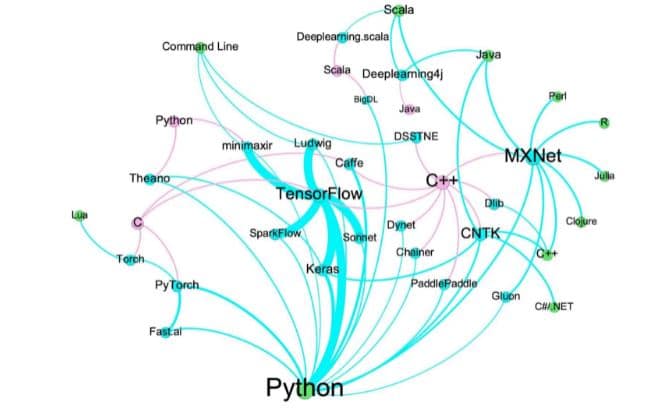The Benefits of Open Source Platforms for Deep Learning Applications
Deep learning is the subset of machine learning. Basically, Artificial intelligence is a bigger umbrella under which machine learning and deep learning algorithms fall under. Deep Learning uses the concept of multi-layer neural networks. Our brain can also be considered a neural network. The human mind consists of billions of neurons that interact with each other and learn new things every day. A neural network is designed to work in a similar way to the human brain.
It has neurons that are connected with certain weights. Over time and training, these neurons learn new things and predict better results. A neural network can only be considered a deep neural network when layers are greater than three.
Training such networks is a time and resource-intensive task. Most of the time, training a deep learning network is not possible on a normal personal machine, so people seek cloud services. Although cloud services are associated with high performance, they are costly and difficult to set up. So, not everyone is in a state to buy a cloud machine immediately when required.
Which is why there are some open source platforms that have been furthering deep learning research efforts by providing free cloud services. First of all, open-source platforms are released under a license in which the owner or the copyright holder grants users the rights to use, inspect, change and contribute to the software freely. Those utilizing an open-source platform have more control over the application, so developers prefer working on them.
Open-source software has a large community, which is why you do not need to wait for the owners to send updates in case of issues. They are free of charge, so they are helpful in applications like deep learning which requires extensive computational resources.
Some of the most popular open-source deep learning platforms include Google Colab, Kaggle, Azure Notebooks, etc. Google Colab is highly popular among machine learning practitioners. Various benefits of open source platforms for deep learning are discussed below.
Lesser Hardware and Software Costs
Using open-source platforms means that you do not need to buy an extra piece of hardware like the GPU and memory devices for your application. Besides the machine you will use to access these open-source platforms, there will be no extra hardware charges. So, this will help in the reduction of hardware costs.
Moreover, using free and open-source can help you save money on the software side as well. You can save money on licensing and maintenance of software. The licensing for open-source software is always free. Also, because open-source software is a community edition, they provide regular updates and support for bug fixes.
Simple License Management
One of the appeals of open-source for developers is that they don’t have to worry about licenses. They can install open-source software several times and use it anywhere. You won’t have to worry about tracking, monitoring, or counting licensing compliance.
Abundant Support
When you utilize open-source software, you will have a lot of help. The majority of open-source assistance is free and accessible through communities online. Many software businesses also offer free online assistance as well as various degrees of paid support. The majority of companies that develop open-source software also provide maintenance and support.
Next Level Development
It is clear that the open-source software‘s contribution to the advancement of deep learning research is highly significant. Sometimes platforms have various conditions on the amount of time a user can use an application freely or the amount of memory the user has access to.
The runtime period on a Google Colab is 12 hours, while on Kaggle it is nine hours. Deep learning platforms like these add such restrictions in order to preserve their memory from getting wasted. Although such conditions may apply, the availability of such platforms has helped advance deep learning application research to another level.


























